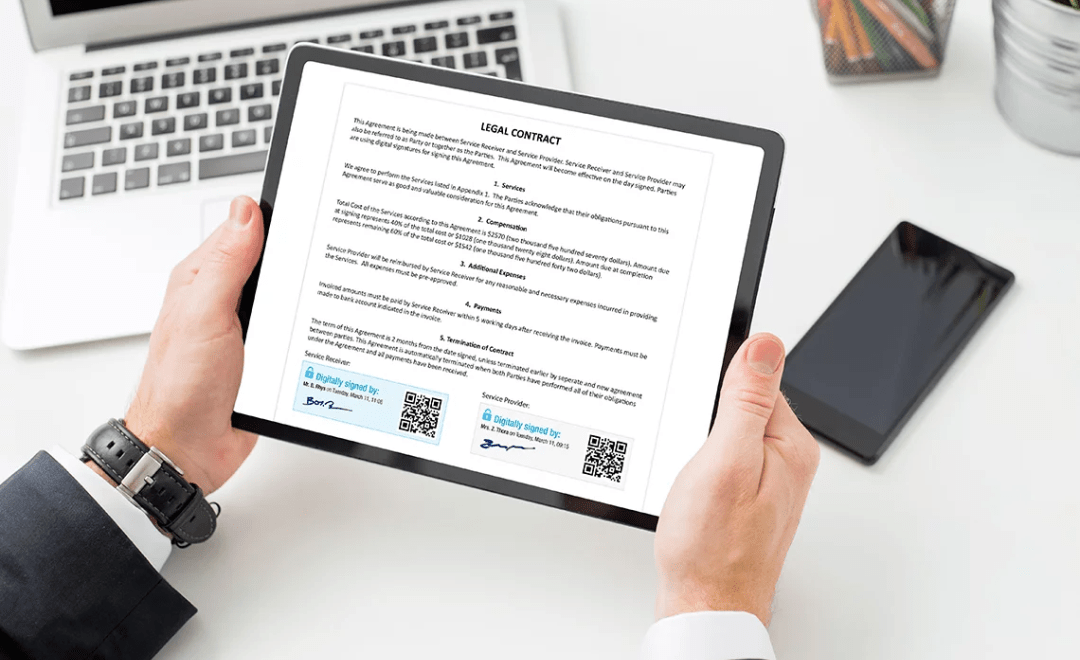Introduction
The Price of Cutting Corners. Here’s why Skipping Clean Room Validation can be a Costly Mistake. Maintaining a clean environment is non-negotiable whether you’re producing pharmaceuticals, electronics, or food products. Although often seen as an additional step, clean room validation is an Un skippable aspect of ensuring product integrity and safety.
However, some may be tempted to skip or skimp on this process to save time or money. But what are the consequences of such a decision?
Understanding Clean Room Validation
Before delving into the repercussions of skipping clean room validation, let’s first understand what it entails. Clean room validation is the process of verifying and documenting that a clean room environment meets specified requirements for air cleanliness, temperature, humidity, and other parameters.
It involves meticulous testing, monitoring, and documentation to ensure compliance with regulatory standards and industry best practices.
What is skipping cleanroom validation and (why it’s not advisable)?
Skipping cleanroom validation can have serious consequences for industries like pharmaceuticals, biotechnology, and electronics manufacturing.
Cleanroom validation is crucial to ensuring that controlled environments meet specific cleanliness standards and operate within acceptable parameters to maintain product quality and safety.
Here are the potential consequences of skipping cleanroom validation:
- Contamination: Cleanroom validation prevents contamination by compromising product quality and cleanroom classification.
- Product Quality: Validation ensures the environmental conditions necessary for manufacturing are consistently met, impacting product quality and adherence to specifications.
- Regulatory Compliance: Regulatory bodies require cleanroom validation for Good Manufacturing Practices (GMP) and skipping this process can result in legal consequences and product recalls.
- Safety and Efficacy: Skipping validation jeopardizes patient safety by introducing contaminants into medications and affecting drug efficacy.
- Process Control: Validation ensures the cleanroom operates as intended, impacting product consistency and reliability.
- Increased Costs: Skipping validation can lead to costly product recalls, fines, and damage control measures.
- Legal Liability: Companies may face legal claims and reputational damage from product defects or harm caused by skipped validation.
- Loss of Customer Trust: Failure to adhere to quality standards can damage a company’s reputation and erode customer trust.
Skipping cleanroom validation poses significant risks to product quality, regulatory compliance, and patient safety. Thorough validation is essential for maintaining cleanroom integrity and ensuring successful manufacturing processes.
Companies need to prioritize quality assurance measures, including validation processes, to mitigate risks and uphold the integrity of their products and operations.
The Hidden Costs of Skipping Validation
- Quality Compromise: By bypassing clean room validation, you’re essentially rolling the dice with the quality of your products. Contaminants such as dust, microbes, or chemical residues can infiltrate the manufacturing process, leading to compromised product quality. This can result in rejections, recalls, and ultimately, damage to your brand reputation.
- Regulatory Non-Compliance: Regulatory bodies such as the FDA (Food and Drug Administration) or ISO (International Organization for Standardization) have strict guidelines regarding clean room standards, especially in industries like pharmaceuticals and medical devices. Skipping validation puts you at risk of failing to meet these regulatory requirements, inviting fines, sanctions, or even legal action.
- Health and Safety Concerns: In sectors like pharmaceuticals or healthcare, product contamination can have severe consequences for end-users. Skipping clean room validation increases the likelihood of producing substandard or potentially harmful products, jeopardizing public health and safety.
- Increased Maintenance Costs: Neglecting clean room validation can lead to higher maintenance costs in the long run. Without proper monitoring and control, equipment and infrastructure may degrade faster due to contamination, necessitating frequent repairs or replacements.
- Lost Opportunities: Poor product quality and regulatory non-compliance can result in missed business opportunities. Potential clients or partners may be hesitant to engage with a company that doesn’t prioritize quality assurance and regulatory compliance, limiting your growth prospects.
Investing in Quality Assurance
Rather than viewing clean room validation as a burdensome expense, it should be seen as an investment in product integrity, customer satisfaction, and long-term success. Here are some steps to ensure effective clean room validation:
- Establish Clear Protocols: Develop comprehensive protocols outlining clean room requirements, testing procedures, and documentation standards.
- Investing in Training: Ensure that staff members are adequately trained in clean room protocols, including proper gowning procedures, equipment operation, and contamination control measures.
Regular Monitoring and Maintenance
Implementing a robust monitoring system to continuously assess cleanroom performance and identify any deviations from established standards. Conduct regular maintenance to upkeep equipment and infrastructure.
Staying Informed
Keeping aware of industry developments, regulatory updates, and best practices related to clean room validation to ensure ongoing compliance and improvement.
Although skipping clean room validation may seem like a shortcut, it’s a gamble with far-reaching consequences. The costs of compromised quality, regulatory non-compliance, and reputational damage far outweigh any perceived savings. By prioritizing quality assurance and investing in clean room validation, manufacturers can safeguard their products, their customers, and their reputation in the marketplace. Remember, when it comes to clean room validation, cutting corners is simply not an option.
Exploring the Ripple Effects
The ramifications of skipping clean room validation extend beyond immediate financial losses and legal repercussions. Let’s delve deeper into the ripple effects that can impact various aspects of your business.
- Brand Reputation: Building a strong brand reputation takes years of consistent quality and reliability. However, one instance of product contamination or failure due to inadequate clean room validation can irreversibly tarnish that reputation. Negative publicity spreads quickly in today’s interconnected world, and recovering trust once lost can be a Herculean task.
- Customer Confidence: Trust is the cornerstone of any successful business relationship. When customers purchase your products, they trust that they are safe, reliable, and of high quality. However, if they discover that shortcuts were taken in the manufacturing process, that trust is shattered. Losing loyal customers due to preventable quality issues can have a lasting impact on revenue and market share.
- Employee Morale and Engagement: Employees are the backbone of any organization, and their morale and engagement directly impact productivity and innovation. Cutting corners on critical processes like cleanroom validation sends a message that management prioritizes short-term gains over employee well-being and job satisfaction. This can lead to disengagement, turnover, and ultimately, decreased productivity.
- Supplier Relationships: In many industries, supply chains are intricate webs of interconnected suppliers and manufacturers. If your company’s products are found to be substandard due to inadequate clean room validation, it not only damages your reputation but also reflects poorly on your suppliers. This can strain relationships and make it difficult to secure reliable suppliers in the future.
- Litigation and Insurance Costs: Product recalls, liability claims, and legal disputes stemming from quality issues can incur significant legal and insurance costs. Without proper documentation of clean room validation processes, defending against such claims becomes exponentially more challenging, potentially leading to hefty settlements or judgments against your company.
The Long-Term Perspective
While skipping clean room validation may provide short-term cost savings, the long-term consequences far outweigh any immediate benefits. Investing in quality assurance measures, including thorough clean room validation, is essential for sustainable growth and success in today’s competitive market landscape.
By prioritizing quality and compliance, businesses demonstrate their commitment to customer satisfaction, regulatory integrity, and ethical business practices. This not only mitigates the risks associated with product defects and recalls but also fosters a culture of excellence and continuous improvement throughout the organization.
Clean room validation is not merely a checkbox on a regulatory compliance list; it is a cornerstone of quality assurance and risk management in manufacturing. By acknowledging the true cost of skipping this critical process and taking proactive steps to ensure compliance, businesses can safeguard their reputation, protect their bottom line, and maintain the trust of their customers and stakeholders for years to come. Remember, in the pursuit of excellence, there are no shortcuts.
Mitigating Risks and Maximizing Benefits
To further emphasize the importance of cleanroom validation, let’s explore some strategies for mitigating risks and maximizing the benefits of this process
- Investment in State-of-the-Art Technology: Modern clean room facilities are equipped with advanced technology for air filtration, temperature control, and contamination monitoring. Investing in state-of-the-art equipment not only enhances the effectiveness of clean room validation but also improves overall operational efficiency and product quality.
- Implement Lean Manufacturing Principles: Adopting lean manufacturing principles can streamline processes, minimize waste, and optimize resource utilization in clean room environments. By eliminating unnecessary steps and focusing on value-added activities, companies can enhance productivity while maintaining stringent quality standards.
- Automation and Robotics: Automation and robotics technologies can significantly reduce the risk of human error and contamination in clean room operations. From automated material handling systems to robotic assembly lines, integrating automation into the manufacturing process enhances efficiency, precision, and consistency.
- Ensuring Cross-Functional Collaboration: Clean room validation requires collaboration across multiple departments, including engineering, quality assurance, maintenance, and operations. Establishing clear communication channels and fostering a culture of collaboration ensures that everyone is aligned with the goals and requirements of clean room validation.
- Continuous Improvement and Adaptation: Clean room validation is not a one-time event but an ongoing process that requires continuous improvement and adaptation to changing conditions and requirements. Regular audits, performance reviews, and feedback mechanisms enable companies to identify areas for enhancement and proactively address emerging challenges.
Parting Thoughts
In today’s dynamic and highly regulated manufacturing environment, cleanroom validation is not just a regulatory obligation but a strategic imperative. By investing in robust validation processes, leveraging advanced technologies, and fostering a culture of quality and compliance, companies can mitigate risks, maximize operational efficiency, and maintain a competitive edge in the marketplace.
Remember, the true cost of skipping clean room validation extends far beyond financial losses and regulatory penalties. It encompasses the integrity of your products, the trust of your customers, and the reputation of your brand. By embracing clean room validation as a cornerstone of excellence and innovation, companies can ensure the long-term success and sustainability of their operations.
FAQs
- What is clean room validation?
Clean room validation is the process of verifying and documenting that a clean room environment meets specified requirements for air cleanliness, temperature, humidity, and other parameters. It involves meticulous testing, monitoring, and documentation to ensure compliance with regulatory standards and industry best practices.
- Why is clean room validation important?
Clean room validation is critical for maintaining product integrity, ensuring regulatory compliance, and safeguarding public health and safety. It helps prevent contamination, minimize product defects, and mitigate the risk of regulatory non-compliance, product recalls, and legal liabilities.
- What industries require clean room validation?
Clean room validation is commonly required in pharmaceuticals, biotechnology, medical devices, electronics manufacturing, aerospace, and food processing industries. These industries have stringent cleanliness and quality standards due to the sensitive nature of their products and processes.
- What are the regulatory requirements for clean room validation?
Regulatory requirements for clean room validation vary depending on the industry and geographical location. In the United States, regulatory agencies such as the FDA (Food and Drug Administration) and organizations like ISO (International Organization for Standardization) provide guidelines and standards for clean room validation, such as ISO 14644 for air cleanliness classification.
- How often should clean rooms be validated?
The frequency of clean room validation depends on factors such as the industry, the level of cleanliness required, and regulatory requirements. Typically, clean rooms are validated upon initial installation, after significant modifications or renovations, and at regular intervals (e.g., annually or biennially) to ensure ongoing compliance.
- What are the consequences of skipping clean room validation?
Skipping clean room validation can lead to compromised product quality, regulatory non-compliance, health and safety risks, increased maintenance costs, and damage to brand reputation.
It may also result in lost business opportunities, litigation, and insurance costs.
- How can companies ensure effective cleanroom validation?
Companies can ensure effective cleanroom validation by establishing clear protocols, investing in staff training, implementing robust monitoring and maintenance procedures, staying informed about industry developments and regulatory updates, and fostering a culture of quality and compliance throughout the organization.
About Incepbio
Incepbio specializes in providing comprehensive solutions for clean room validation and contamination control in various industries, including pharmaceuticals, biotechnology, and healthcare.
With our expertise and advanced technologies, we help companies ensure compliance with regulatory standards, minimize contamination risks, and optimize operational efficiency in cleanroom environments.
From initial validation assessments to ongoing monitoring and maintenance, Incepbio offers tailored solutions to meet the unique needs of each client, ultimately helping them enhance product quality, protect public health, and maintain a competitive edge in the marketplace.






